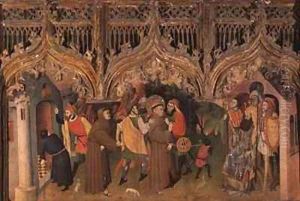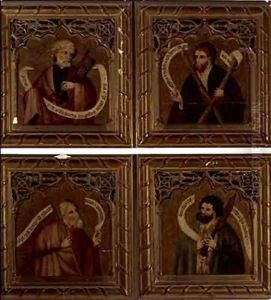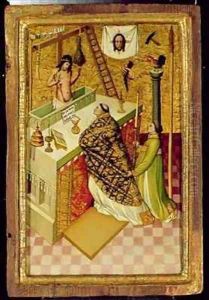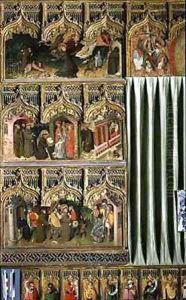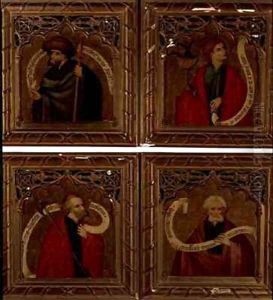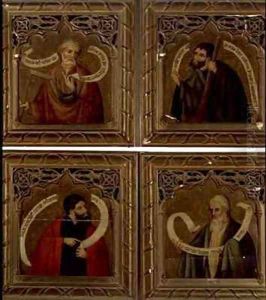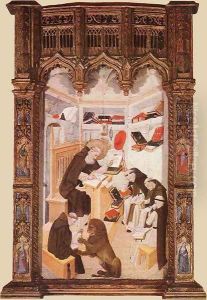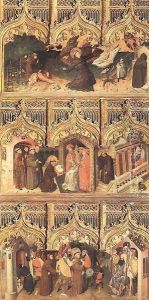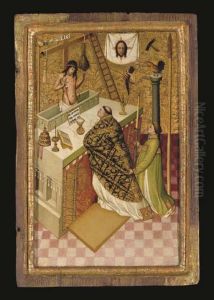Nicolas Frances Paintings
Nicolas Frances, also known as Nicolás Francés, was a notable Spanish Gothic painter whose activity was recorded between 1425 and 1468. While the exact date of his birth is unknown, what is clear is that he was a significant figure in the development of the Gothic style within the region of León in Spain.
Frances' work is characterized by the integration of elements from the International Gothic style, which was prevalent in Europe during the late 14th and early 15th centuries. This style is distinguished by elegant and elaborate figures, the use of bright colors, and intricate ornamentation. His paintings often contain a high level of detail and a certain degree of realism, which was becoming more prominent in European art as it transitioned into the Renaissance period.
Not much is known about Frances' life, but his legacy is preserved in the artworks he left behind. He was primarily active in León, where he made significant contributions to the local art scene. His most notable work is the altarpiece for the collegiate church of San Isidoro in León, which he completed in the 1440s. This masterpiece showcases his ability to combine the spiritual iconography of the time with a naturalistic approach to human figures and space.
Another important work attributed to Nicolas Frances is the altarpiece of the Monastery of Santa María de Sandoval. His paintings often depicted religious themes, which was typical for the era, with a particular emphasis on the lives and miracles of saints, the Virgin Mary, and scenes from the life of Christ.
Nicolas Frances' influence extended beyond his own works. He contributed to the training of other artists and the spread of the Gothic style throughout the Iberian Peninsula. Unfortunately, like many artists of his time, the details of his personal life remain obscure, and our knowledge of him is mainly derived from his surviving works and the historical context in which he lived. He passed away in 1468, but the exact circumstances of his death are not documented. His works continue to be studied and admired for their contribution to the Gothic art of Spain and their place in the broader narrative of European art history.
